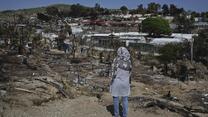Since the shift in power in Afghanistan in August 2021, humanitarian and protection needs have continued to rise. Millions have been forced to flee their homes, often relying on dangerous routes. Afghans now represent the third largest refugee population globally, and the resettlement needs of Afghan refugees in the region have rapidly mounted. In response, EU institutions and member states have made greatly needed and welcome commitments to help Afghans at risk access protection pathways to Europe - including through refugee resettlement, humanitarian admissions, and other complementary pathways. Each of these efforts has been crucial in supporting people to find safety and rebuild their lives.
However, nearly two years on, these efforts remain vastly insufficient, and many promised admission schemes have yet to materialise at scale. Further, significant hurdles are preventing many Afghans in need from accessing the safe routes that have been put in place.
Challenges do not end once Afghans reach Europe in search of safety. Asylum seekers and refugees often face the threat of pushbacks or forcible returns, barriers to fair and full asylum procedures, and long periods in undignified, detention-like centres upon arrival.
Nobody seeking safety in Europe should find themselves at further risk of harm. EU institutions and states should urgently reaffirm their commitment to protecting Afghans at risk and draw the lessons from this response.
This report sets out a roadmap with recommendations both to overcome the most immediate challenges and to put in place a sustainable, longer-term approach that is better aligned with the EU’s values and capacity to welcome.



